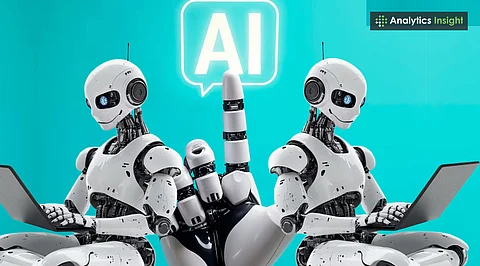How AI Agents Will Drive Generative AI Further?
Overview
AI agents turn generative AI from passive content creation into active, goal‑driven execution across complex workflows.
They can adapt in real time, work across platforms, and learn from feedback, making them powerful digital collaborators.
Early adoption will give businesses an edge, but success requires clean data, process mapping, and human oversight.
Generative AI used to be a tool for producing ideas and content once. Now, it is an everyday companion for workers, students, and creators. This rapid evolution from a research novelty to a common utility has happened in a surprisingly short span.
The future will be defined not only by creation alone but also by the ability to act. AI agents are built for that future. The time to explore, test, and integrate them into your work is now. Let’s take a look at how AI agents will drive generative AI.
How Agents Get Work Done
Most generative AI automation tools are reactive in nature. Agents take this trait a step further. They can plan, decide, and act; a simple goal becomes a complete strategy. First comes breaking the goal into smaller, clear tasks. Then comes choosing the right tools, bringing people and systems into the process, and fine-tuning every part until the goal is fully met.
Flights, hotels, local transport, and dinner reservations can all be handled by the agent when given a full travel request. Or describing a new software feature and seeing the agent design, code, test, and deploy it while keeping you in the loop.
Also Read: How AI Voice Agents Are Improving Healthcare Documentation
Real Advantages of AI Agents
The shift to AI agents isn’t just a technical upgrade; it’s a leap in how we interact with technology. They bring four major advantages:
Handling Complexity Without Breaking: Rule-based systems work fine for predictable processes. But real-world tasks are rarely that simple. Agents can adapt in real time, handling unpredictable scenarios without collapsing under exceptions.
Speaking Our Language: Natural language can replace detailed coding in defining tasks. This method permits workflow automation by non-technical specialists, improving delivery speed and cutting costs.
Working Across Platforms: Agents can move between tools, pull data from different sources, and even collaborate with other agents. Linking CRM maintenance with market insights and campaign creation, these functions weave together the loose strands of today’s digital environment.
Learning and Improving: Preferences are learned, new tasks are adapted to, and efficiency grows with each cycle when agents operate within feedback loops.
Real-World Impact of Agents
Early signs of this shift are already visible.
In business operations, companies are testing agents that handle complex support tickets end-to-end, cutting resolution times in half.
In finance, prototype models can assess loan applications, compile credit memos, and recommend risk strategies, tasks that normally take teams days to complete.
In software, agents are being used to modernize legacy systems by analyzing old code, documenting it, and rewriting it for modern platforms.
In marketing, multi-agent setups are developing and testing campaign ideas, creating content for multiple channels, and refining based on audience feedback.
These are not just faster ways of doing the same work; they’re changing the nature of the work itself.
Steps to Get Ready for AI Agents
It is not too soon to position your business for the changes that come with next-generation AI.
Bottlenecks, repetitive manual actions, and disconnected systems that could be streamlined with automation can be identified by mapping the entire workflow.
Shape your data environment. Keep records current, well-structured, and easily accessible for faster, more accurate results.
First comes automation to handle the heavy lifting. Then come the human touchpoints where performance is examined, flaws are corrected, and quality is enhanced before delivery.
Safe Practices for Agent Deployment
Greater freedom for agentic AI calls for greater care in its guidance. Without rules, open decisions, and strong privacy controls, that freedom can lead to problems. Giving them a start with onboarding, skill-building, and close supervision makes sure they can stand on their own safely. This process not only reduces risk but also builds trust in how the agent operates.
Also Read: AI Agents vs Agentic AI: Key Differences You Should Know
Conclusion
The rise of this technology will push generative AI from a creative partner to a true operational partner, one that doesn’t just help you think but helps you act. Mankind is moving toward a future where your ‘digital colleague’ can brainstorm with you in the morning, launch a project in the afternoon, and have results ready by the time you leave work.
It’s not science fiction anymore. This might just be the next step in how we turn ideas into reality, and it’s coming faster than most people expect.
.png)

